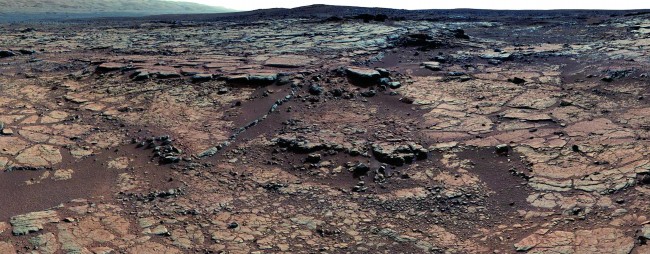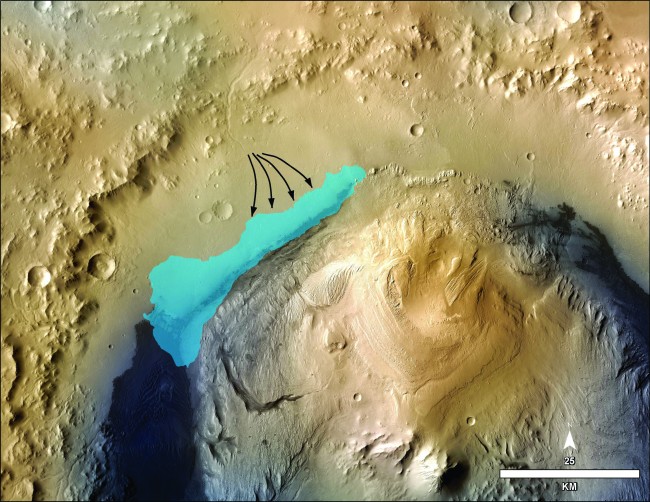Life on Mars
October 22, 2014

Gary Kocurek, professor in the Department of Geological Sciences at the Jackson School of Geosciences, was part of the team that reported two new findings from the Mars Curiosity rover: an ancient lake could have sustained life on the red planet and sediments at Gale Crater are similar to deposits found elsewhere on Mars.
NASA’s Curiosity rover began exploring the 96-mile-wide Gale Crater in August 2012 in hopes of discovering whether it may have once been well-suited to support microbial life. The mobile Mars Science Laboratory carries instruments for collecting and analyzing samples drilled from rocks or scooped from soil.
Kocurek is one of about 400 scientists on the Curiosity team. He and his co-authors reported in the Jan. 24, 2014, issue of Science that mudstones gathered in an area of Gale Crater called Yellowknife Bay contained clay minerals indicative of a relatively freshwater lake. The samples also contained some of the key chemical ingredients for life: carbon, hydrogen, oxygen, sulfur, nitrogen and phosphorus. Such chemistry would have supported mineral-eating microbes called chemolithoautotrophs, researchers said.

Scientists estimate the ancient lake likely covered an area about 31 miles long and 3 miles wide for at least tens of thousands of years, possibly longer. The lake possibly existed until as recently as 3.7 billion years ago, researchers noted, suggesting Mars may have supported life more recently than previously thought.
Kocurek co-authored another Science paper published in the Sept. 27, 2013, edition that found a deposit of wind-blown sand and dust in Gale Crater is chemically and mineralogically similar to deposits previously analyzed by the Mars rovers Spirit and Opportunity at two other sites.
Sediments in all three locations were produced by the physical weathering of volcanic rocks called basalts.
“These results are consistent with a wealth of other evidence that the Martian crust is primarily basalt and that physical weathering is much more important than chemical weathering,” said Kocurek.
Researchers offer two possible explanations for the trio of distant yet similar sediments. Strong global winds may have picked up and mixed local sediments into a globally similar mixture, or maybe the basalts that spawned the sediments are similar everywhere on the planet.
The deposit analyzed, called the Rocknest sand shadow, is an accumulation of wind-blown sediment. Soon after landing in Gale Crater, Curiosity dug up five scoops of loose material from Rocknest and analyzed it using five instruments.
“This is a big deal,” said Kocurek. “We’re exploring another planet with a rover that acts like a geologist and carries its own sophisticated laboratory around. We know so little about Mars that anything we find is important.”
Back to the Newsletter